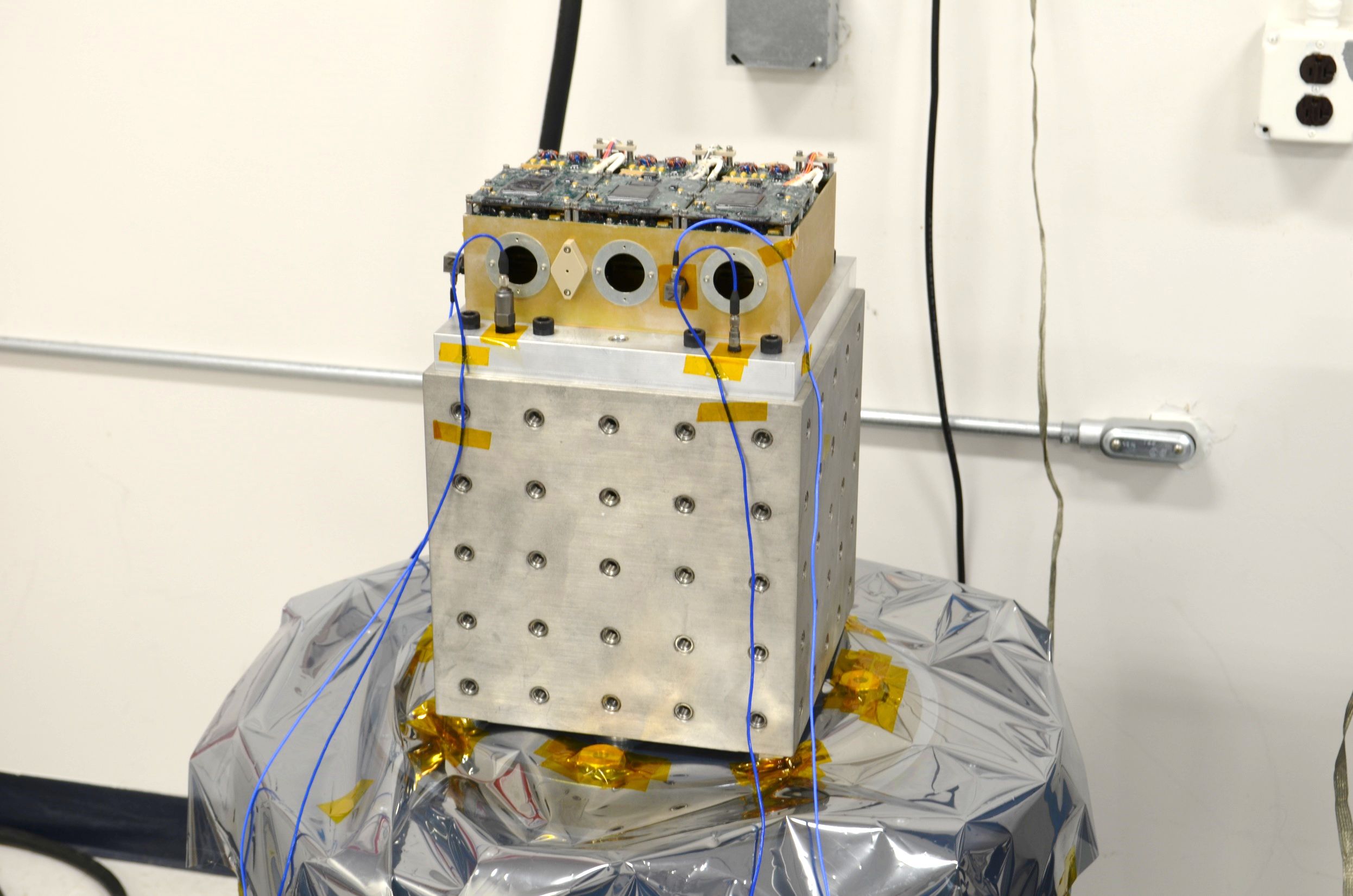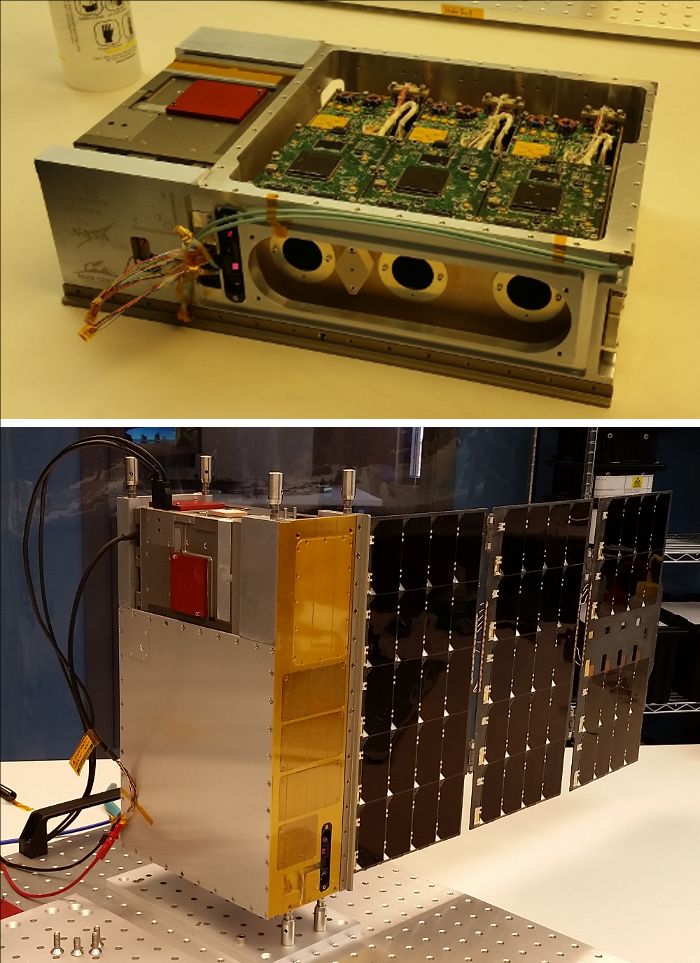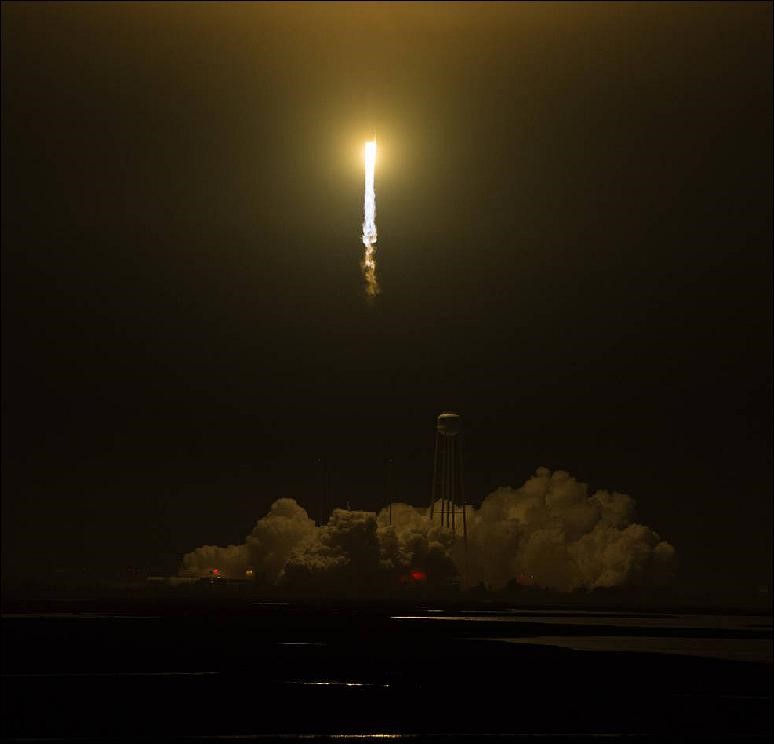SmallSat Missions @ GoddardHaloSat

HaloSat is a 6U CubeSat led by Principal Investigator Dr. Phil Kaaret from the University of Iowa and managed by GSFC's Thomas Johnson. The mission is funded by the Science Mission Directorate Astrophysics Division. It is being done in collaboration with John Hopkins Applied Physics Laboratory and the LATMOS French research laboratory. HaloSat's objective is to measure the oxygen line emission from the hot Galactic halo. Since baryonic matter makes up approximately 4.9% of the total mass-energy of the universe, yet enumeration of luminous matter fails to locate a substantial fraction of predicted baryons, there becomes a "missing baryon" problem. It is important to determine whether the missing baryons are gravitationally bound to galaxies or instead form a truly intergalactic medium. One possible reservoir of missing baryons associated with our Milky Way galaxy is an extended halo of X-ray emitting gas at temperatures of several million degrees. X-ray emission and absorption from highly ionized oxygen are the primary diagnostics to study such hot gas.
The instrument consisted of three commercially available X-ray silicon drift detectors from Amptek, Inc. that are sufficient to isolate oxygen emission lines. The University of Iowa constructed the supporting instrument electronics, housing, and performed all necessary performance testing. The spacecraft bus was the Blue Canyon Technology Inc. (BCT) XB1 bus. BCT was contracted to integrate the instrument and bus, perform spacecraft testing, deliver to the launch provider, and perform mission operations.
The spacecraft was delivered to the launch provider, NanoRacks, on March 26, 2018. It was launched to the International Space Station (ISS) on May 21, 2018 on the Orbital ATK Antares launch vehicle out of NASA Wallops Flight Facility.


HaloSat was deployed from the ISS on July 13, 2018. Spacecraft commissioning was conducted until October 16, 2018 where nominal science operations began. Communications was handled through the UHF ground station at NASA Wallops Flight Facility. The combination of the 18 meter UHF dish and Cadet radio allowed for data rates up to 3 Mbps. Nominal science operations have continued to date. There were issues with the SD card and Cadet radio that had to be resolved along the way. HaloSat conducted mission operations for over 2 years before re-entering Earth's atmosphere on January 4, 2021.
The data acquired from the instrument has met the science goals of the mission. Numerous science papers and presentations have been generated as a result, such as the following:
- Silich, E. M., Kaaret, P., Zajczyk, A., LaRocca, D. M., Bluem, J., Ringuette, R., ... Kuntz, K. D. (2020). Global X-Ray Properties of the Vela and Puppis A Supernova Remnants. The Astronomical Journal, 160(1), 20. doi: 10.3847/1538-3881/ab93d3
- LaRocca, D. M., Kaaret, P., Kirchner, D. L., Zajczyk, A., Robison, W., Johnson, T. E., ... Miles, D. M. (2020). Design and construction of the x-ray instrumentation onboard the HaloSat CubeSat. Journal of Astronomical Telescopes, Instruments, and Systems, 6(1), 014003. doi: 10.1117/1.JATIS.6.1.014003
Data from the mission's first year has also been released to the public through NASA's HEASARC.



